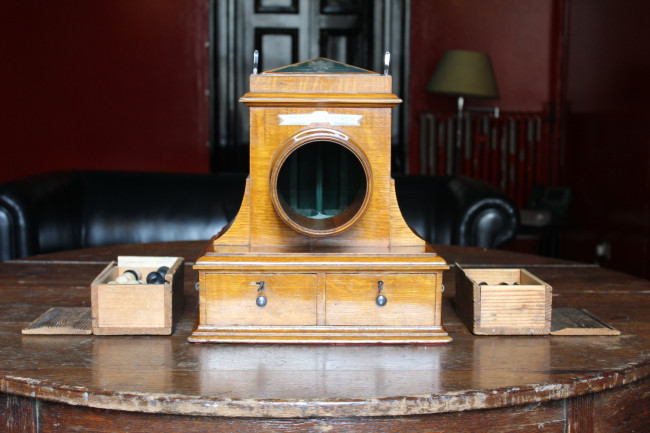Submitted by WA Contents
How do Academicians get elected?
United Kingdom Architecture News - Mar 16, 2014 - 13:22 2367 views
By Tom Jeffreys
From nomination to induction
Recent years have seen a host of new innovations here at the RA, but the election process for new Academicians has hardly changed in almost 250 years. Here is how it all works.
At the heart of the Royal Academy are the Academicians – a group of world-leading artists and architects who are responsible for our overall direction and governance. As stipulated in our founding documents, there are a maximum of 80 Academicians at any one time, and vacancies for new members only arise when an existing RA reaches the age of 75 and becomes a Senior Academician or on the death of an RA.
This means that, ordinarily, only one or two new members are appointed each year, but over the past twelve months, no less than 10 new Academicians have been elected – the most in a single year since our foundation in 1768. Whilst this influx of artists and architects has contributed to a sense of renewal at the Academy, it has also focused attention on the election process itself, which has remained largely unchanged in 246 years.

The Nominations Book
In theory, anyone is eligible to become an RA, as long as they are under 75 and professionally active as an artist or architect in the UK. Potential new RAs are first nominated by an existing Academician, who writes their name in the weighty Nominations Book. Past books are all held in storage in our Collection: each one has a distinctive design, reflecting in some ways the tastes of the period in which they were commissioned. The very first book, for example, dates from 1866 to 1907, and is embellished with a royal crest and large lock. Later versions are less obviously grand, but still carefully crafted objects in their own right.
Once a name has been added to the current Nominations Book, signatures must then be elicited from eight other RAs in support of the nomination. At this stage the nominee becomes a Candidate. Until 1907, a proposer need only elicit one secondary signature. This was raised to three in 1906, and then eight in 1996. This explains the change in format of the Nominations Books – from ten nominations arranged in rows across a double-page landscape spread to a single sheet per nomination.

The Nominations Book, Francis Bacon
What is fascinating about looking through these old books is seeing who supported which nominations, and imagining the politicking that must have gone on behind the scenes. The books also bear witness to those artists and architects who were nominated but did not join the Academy – either because they failed to receive sufficient support, or because they did not want to join. Francis Bacon, for example, was nominated quite early in his career – by Robert Butler in 1950 – but was clearly not interested. A note at the top of his page in the Nominations Book reads: “nomination declined – by implication – through failure to reply to three letters.” It’s dated 1952 – two years after Bacon was first nominated.
In May and December each year, all the Academicians meet at a General Assembly to vote in new Members from the list of Candidates. While 2014 has seen the first half of the selection process for the Summer Exhibition transferred online, the voting in of new members is still done entirely in person. There is no postal voting. One thing that has changed, however, is that elections now proceed by rounds of “scratching”, during which a paper is given to each member to mark their preferred candidate. Previously, RAs would place marbles or wooden balls into a ballot box [pictured below]. This passed into retirement around fifteen years ago, but is still used as table decoration. The Latin inscription on the front of the box reads Detur Digniori, translated as “Let it be given to the more worthy”.

The ballot box
If elected, the new Academician is contacted by their proposer. For some, this is a complete surprise; others will have been tipped off about how their nomination is progressing. The newly elected Royal Academician then donates a work, known as a Diploma Work, to the Royal Academy. These form an important part of our Collection, which includes work by Henry Fuseli RA, JMW Turner RA, David Hockney RA, Edwin Lutyens RA, John William Waterhouse RA and Tracey Emin RA. Pictured below are the Diploma Works of three current Academicians: Basil Beattie RA, Tacita Dean RA, and David Chipperfield RA. Highlights from the Collection can be seen on our free tours of the John Madejski Fine Rooms, which also take in the General Assembly Room, where the voting takes place.
The final stage of becoming an Academician involves a short traditional ceremony, when the artist receives their medal from our President and signs the Role of Obligation, which includes the signatures of every Academician since our founding in 1768. The artist is now an Academician, an important new voice for the future of the Academy.
